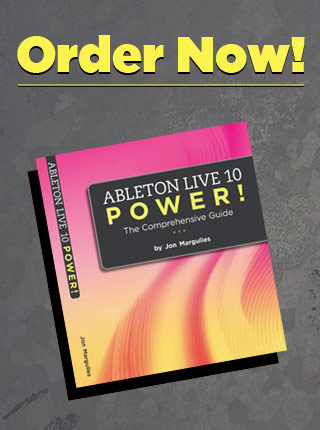This tip might be a real snoozer for some of you more advanced users, but it’s one of those things that all sorts of folks aren’t completely clear on, so here goes… Live lets you drag in samples from all over your hard drive. Loops, drum hits, field recordings, whatever. When transferring a Set to […]
COLLABORATING: ABLETON INSTRUMENT AGGRO
If you have the Live Suite, or any of Ableton’s add-on instruments (or the Corpus effect), you have to be extra careful if you’re transferring a Set to a user that doesn’t have the same instruments. The issue is this: any set containing unauthorized instruments will be opened by Live in Demo mode – which […]
COLLABORATING: THE COMMITMENT ESCAPE HATCH
Some of this stuff about workflow and committing to ideas really isn’t limited to collaboration… it applies just as much when you’re working on your own. But here we are. So… Sometimes you want to commit to an idea by freezing and flattening, but you still want to leave yourself the option of going back […]
COLLABORATING: ANTI-FREEZE
While Freeze is a pretty great technology, expecting that it will solve all of your collaboration woes will lead to disappointment. My experience is that as Sets get large and complex, it gets easy to accidentally miss a track that needs to be frozen before you hand it off. A few thoughts to help improve […]
COLLABORATING: EDIT FROZEN AUDIO
When working with frozen audio tracks, there are some important things you can’t do, such as messing with Warp markers and adding new effects. Typically, the Flatten command is used to turn a frozen track into a standard audio track. When a track is flattened, the original track is thrown away and replaced with a […]
COLLABORATING: EDIT FROZEN MIDI
So, what do you do when you’re faced with a frozen track but you want to do some sort of editing that’s not allowed? In that case, you have to get a little creative… Let’s look at the example of MIDI editing. Since you can’t edit the MIDI in a frozen track, the first thing […]
COLLABORATING: FREEZE!
To easily share Sets between two different computers, both computers must have the same plug-ins installed (or rather, all of the plug-ins used in the Set being shared). When the necessary plug-ins aren’t available on both machines, the common workaround is to use Track Freeze. First, a bit about freezing tracks, then we’ll talk about […]
ABOUT COLLABORATING
The next topic I’m going to spend a few days writing about is collaboration. In particular, we’re going to look at some of the thorny technical issues that come up when moving a Set back and forth between multiple machines, and having people both make changes to Sets on their own, which then need to […]
SAVE PARAMETER CONFIGURATION
As I’ve alluded to a couple of times already, the most complete solution to the hassles of plug-in parameter configuration is to create a Rack that contains your fully configured plug-in. The process looks like this: 1) Configure the plug-in’s parameters 2) Use the Group command to put the plug-in into a Instrument or Effect […]
ABOUT PLUG-IN PARAMETERS
Today’s tip isn’t really a tip. It’s a bit of background information before we get into a few related tips… When Live 8 came out, we finally got the ability to fully automate and remotely control plug-ins with greater than 128 parameters. Along with this came the configurable parameter area: For any plug-in with less […]





